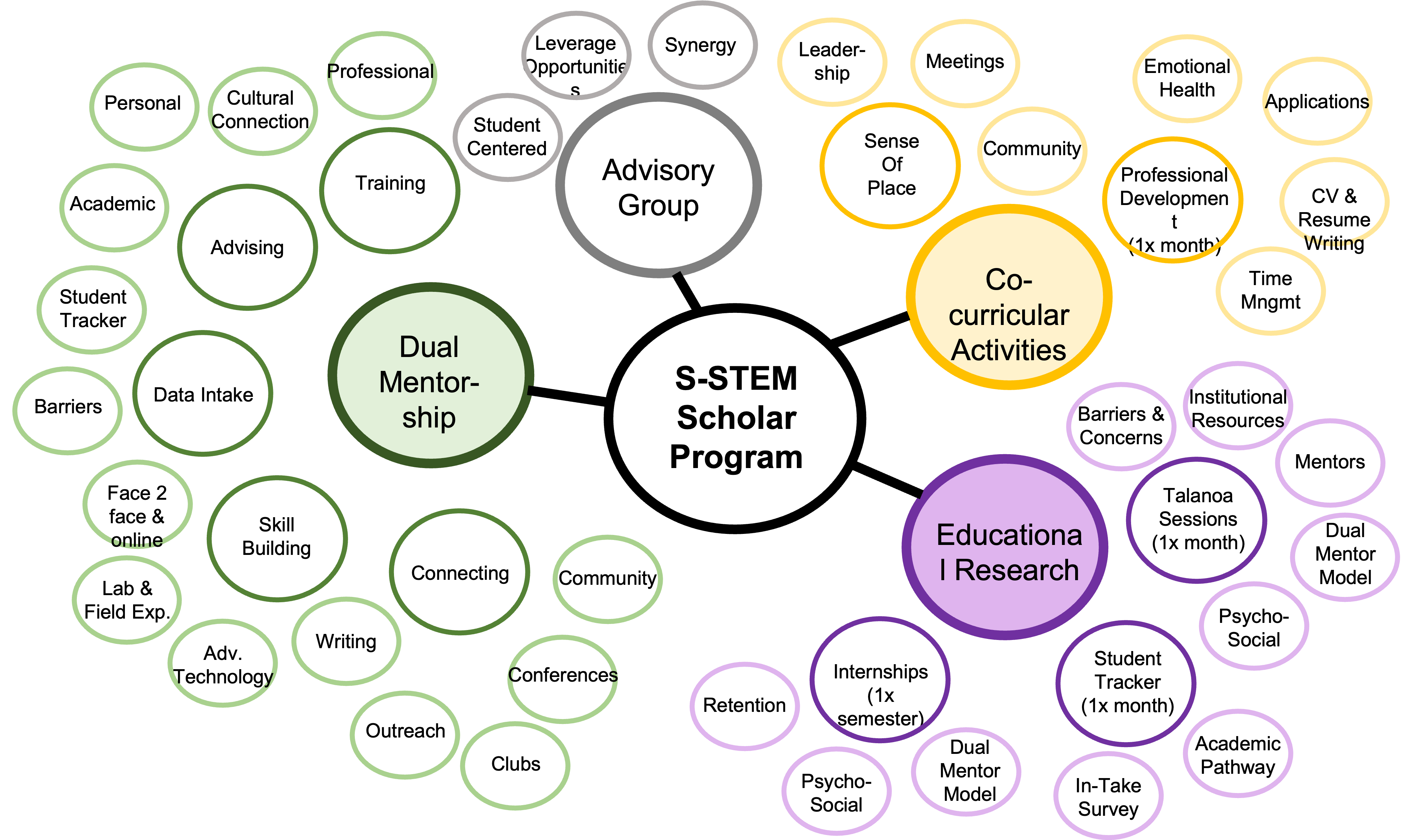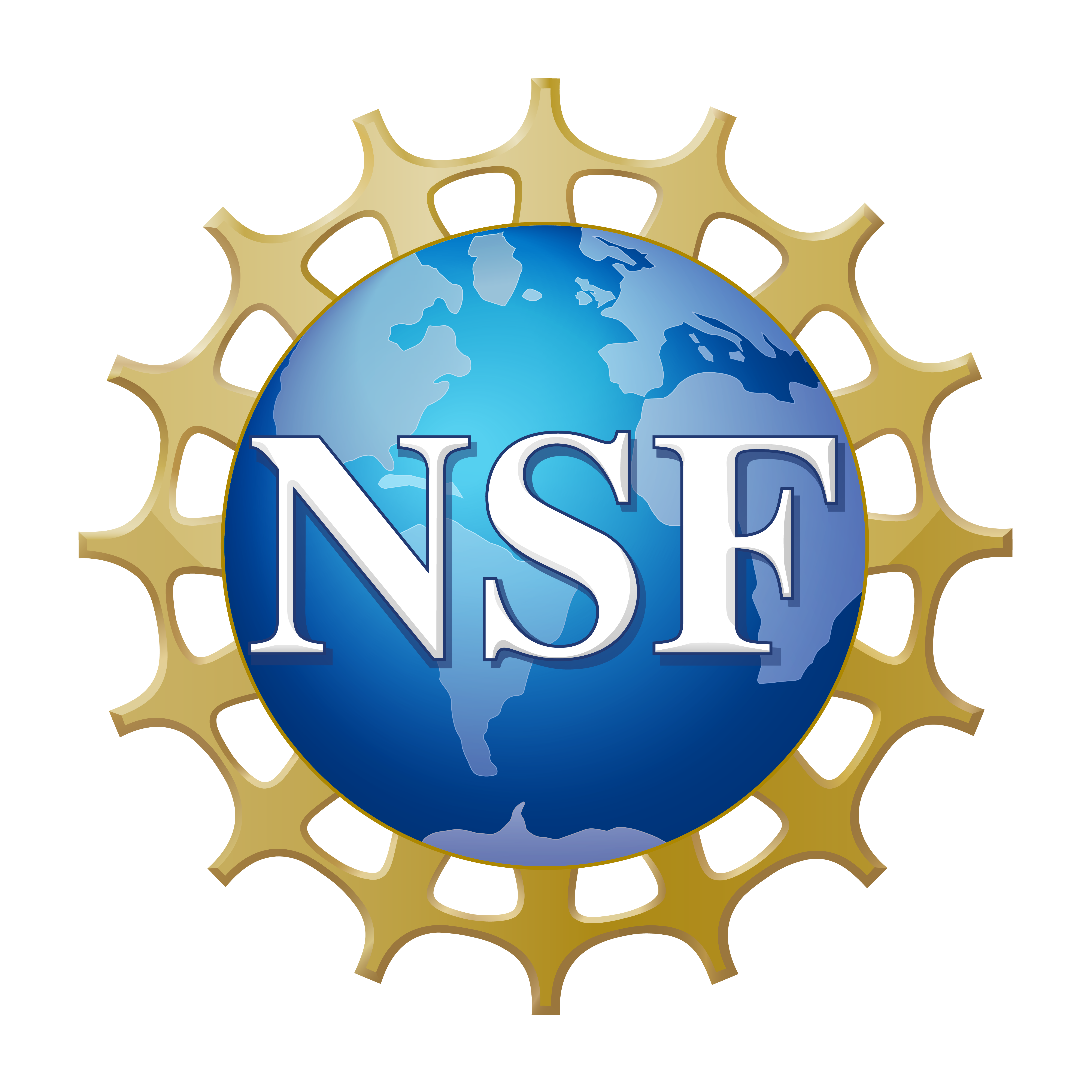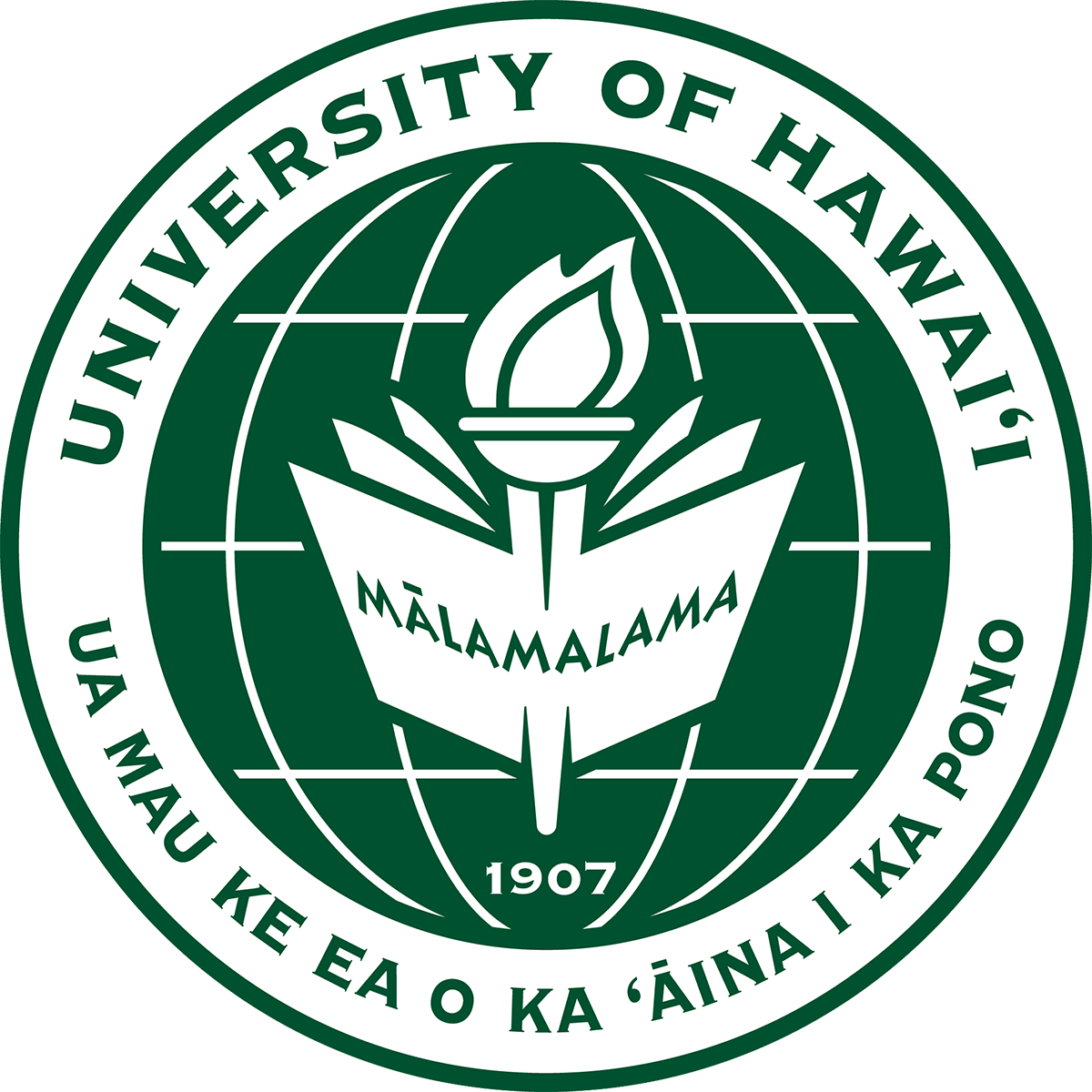Each cohort of STEM Scholars (S-Scholars) will be supported by financial assistance through STEM scholarships. Programmatic support is also offered for S-Scholars. It includes (1) monthly cohort activities in skill development and application, (2) academic and workforce-skill support, and (3) two mentors (an academic mentor and a mentor who can provide support in relevant ways). S-Scholars will be part of a community and network of connected faculty, professionals, and advisors with expertise and experience in the marine and environmental sciences. All S-Scholars will be part of educational research. The data-driven outcomes will support our understanding of barriers and best practices to support STEM students who identify as low-income.

Our project structure equips scholars with two mentors, an academic mentor and a socioemotional mentor. The academic mentor will be either a faculty member (i.e., at UH or another institution). The socioemotional mentor can be drawn from a larger pool (i.e., a non-STEM faculty member, former STEM Scholar, family member professional, etc.).
Why do I need a mentor?
Positive mentorship experiences in higher education have shown increased student grade-point averages (GPA), sense of belonging, self-efficacy, science identity, and commitment to a career in STEM.
- Talanoa Sessions: This method provides an opportunity for STEM Scholars to build relationships and engage in shared discussions.
- Skill Development: STEM Scholars will be encouraged to attend monthly co-curricular activities, including targeted and relevant training and opportunities to share experiences and challenges. Topics will include critical thinking, analytical skills, time management, resume building, presentations, reading/writing scientific papers, communication/leadership skills, budgeting finances, career planning, and other areas of interest.
- STEM Scholars Symposia: An annual symposium will be held for STEM Scholars who have completed their research/internship/
stewardship experiences.
We will try to post all handed-out materials regarding our S-STEM Scholar program on this site, so check back if you missed anything.
We will try to post all forms regarding our S-STEM Scholar program on this site, so check back if you missed anything.
This section is for our scholars who are interested in transferring to the University of Hawaiʻi at Mānoa (UHM) from either ASCC, CMI, COM-FSM, NMC, or PCC. Although we pulled together the transfer information we felt was relevant to the concerns our scholars have expressed from the institutions mentioned above, we highly recommend you access the resources and guides available on the UHM websites and contact your transfer advisor. We hope this information equips you with a broad understanding of and simplifies the processes relating to transferring to UHM.
At A Glance: Transfer Considerations Drop-down Guide
2.0 GPA (residents – CMI, COM-FSM & PCC)
2.5 GPA (non-residents – ASCC & NMC)
24 transferable credit courses
Do my courses transfer? click to use Articulation Query
How to read the results of the articulation query – using the results for the Marine Science program at ASCC as an example
The courses on the left were previously evaluated by UH Mānoa. Their UH Mānoa equivalent is listed on the right. In other words, if a student has completed MSC 150 at ASCC, they will receive transfer credit at UH Mānoa for OCN 201.
Some courses may not have an exact equivalency, such as MSC 160; however, if a student completed that course at ASCC, it will transfer as a General Education requirement. In this example, it will transfer as a general education Biological Science (DB) course. Or, in the case of MSC 155, it looks like a more detailed syllabus from that course is needed to determine if there is an equivalent course at UH Mānoa.

The cost to attend UH Mānoa varies per person and depends on various factors, including tuition, housing, university fees, textbooks, transportation, and general living expenses. The information below is an approximate guide, written in 2025. For a more comprehensive review of these costs, please refer to UH Mānoa’s guide: Financing Your Future.
Tuition per year (based on 12+ credits):
- Resident (CMI, COM-FSM & PCC) = $5,760
- Non-Resident (ASCC & NMC) = $8,640
- 150% x resident tuition cost
Fees, mandatory fees for attending:
- All students = $882
On-Campus Housing – varies and fills up quickly:
- Minimum = $4,831 (triple room occupancy with community bath)
- Maximum = $13,524 (one bedroom occupancy with private bath)
On-Campus Meal Plan – varies:
- Basic annual plan (7 days a week) = $4,325
On-Campus Transportation Options:
- U-Pass = $0, because the cost is included in “fees”
- Eligible students receive an unlimited transit pass for TheBus during the Fall and Spring semesters.
- Rainbow Shuttle = $0
- A free shuttle service, the Rainbow Shuttle, operates during the Fall and Spring semesters, offering frequent access to the UH Mānoa campus for students, faculty, staff, and affiliates.
Other Estimated Costs:
- Books = $1,404
- Personal Living Expenses = $2,778
You can expect to pay more than the estimated cost below for attendance at UH Manoa. The estimates below are provided only to give you a brief overview of what the costs will include and what the very minimum could look like for a transfer student. Please contact your institution’s point of contact for the most up-to-date information on these costs.
— = residents (CMI, COM-FSM & PCC)
—- = non-residents (ASCC & NMC)
<still working on this> Many options are available to you to pay for college, including scholarships, grants, and federal student loans. Ensure you understand the costs associated with these options. For example, although you may earn a scholarship, you may need to prepare to pay a U.S. federal tax on that scholarship for the year it is awarded. However, you typically do not pay taxes on federal grants such as a Pell Grant. You will typically be charged an interest rate for taking out federal student loans, depending on your lender and loan situation. As a S-STEM scholar, your scholarship amount will increase to $15,000 per year. It is essential to note the application deadlines for each of these opportunities on your calendar. For a more comprehensive review of these options, please refer to UH Mānoa’s guide:
FASFA: Student Loan:
- Deadline to apply before Feb 1, 2026
- UH Manoa school code: 001610
- You will be notified the amount you may borrow a few months after you have submitted your application
- You will also be notified if you are eligible for a Federal Pell Grant and the amount you may be awarded
UH Scholarship System:
S-STEM Scholarship:
Notify the S-STEM staff that you plan to transfer and notify them when you are accepted to the UH of Manoa. At this time, we will contact you to update your information. You will not need to apply for the S-STEM scholarship – it will already be awarded provided you continue to meet the criteria.
You will want to work with your current institution’s academic transfer coordinator. (see below). You can also email the staff at the Mānoa Transfer Coordination Center housed at the Office of Student Academic Success at UH Mānoa.
Transfer Coordinator:
ASCC
CMI
COM-FSM
NMC
PCC
Congratulations on this important step in your academic pathway towards securing your career and pursuing your dreams! First, you will want to understand the deadlines for payments (ex., tuition) and applications (housing and meal plans). You will also need to pay some costs upfront before you can select your courses and submit certain applications (housing). Please work with your transfer coordinator to get the most up-to-date information. You will also need to set up a My UH account. Help your family reserve at least an hour to set up your accounts, including paying your tuition.
Sign your offer of acceptance before the deadline:
- For Fall 2026: Feb 1 to Apr 1, 2026
Advice on Payments:
Reserve 30 minutes to 1 hour to set up. The process consists of many windows.
Advice on Courses:
Remember, classes fill up fast, so be prepared:
- Mark your calendars for your assigned registration date for classes
- Meet with your academic advisor and plan out your classes
- Look through the catalog (STAR GPS) to find courses for your attending semester
- Have a backup plan for the classes that typically fill up
Questions, Contact the Office of the Registrar:
- Email: uhmreg@hawaii.edu
- Ph: 808-956-8010 (Phone Hours: 9:00am-3:00pm, HST)
- Open Monday – Friday, 9:00am-3:00pm, excluding holidays
- Located on campus at Queen Lili’uokalani Center for Student Services (QLC) Room 010


